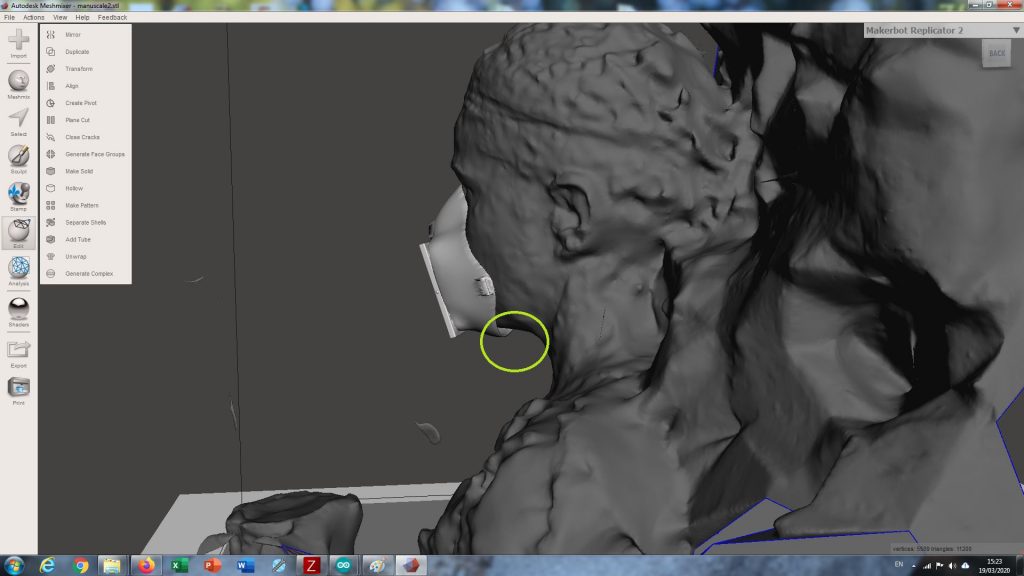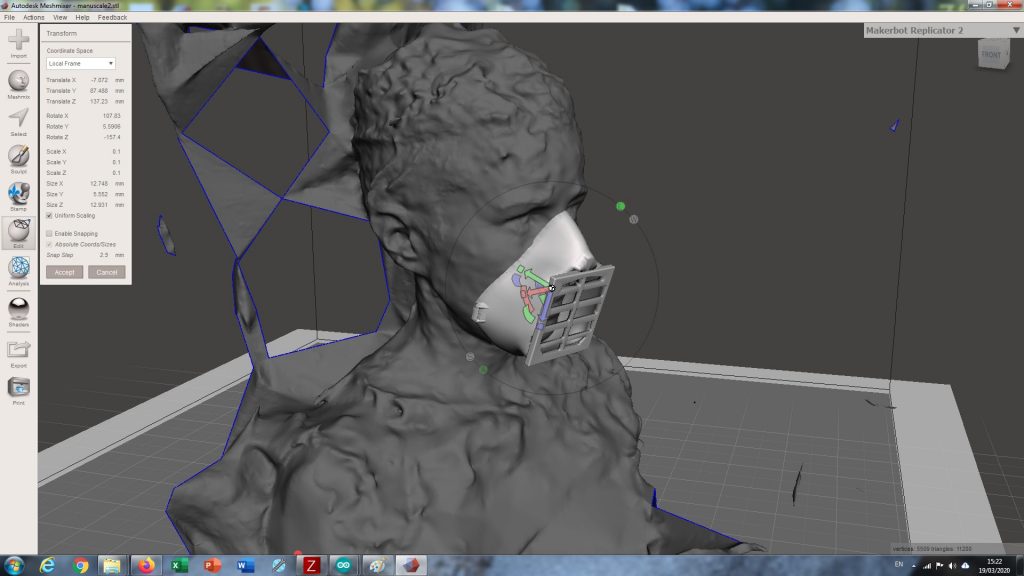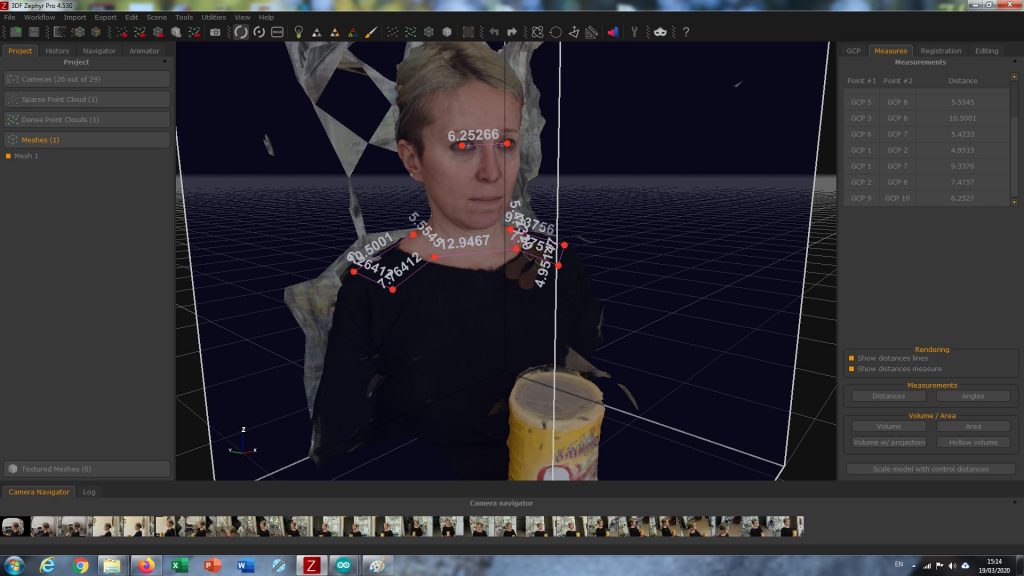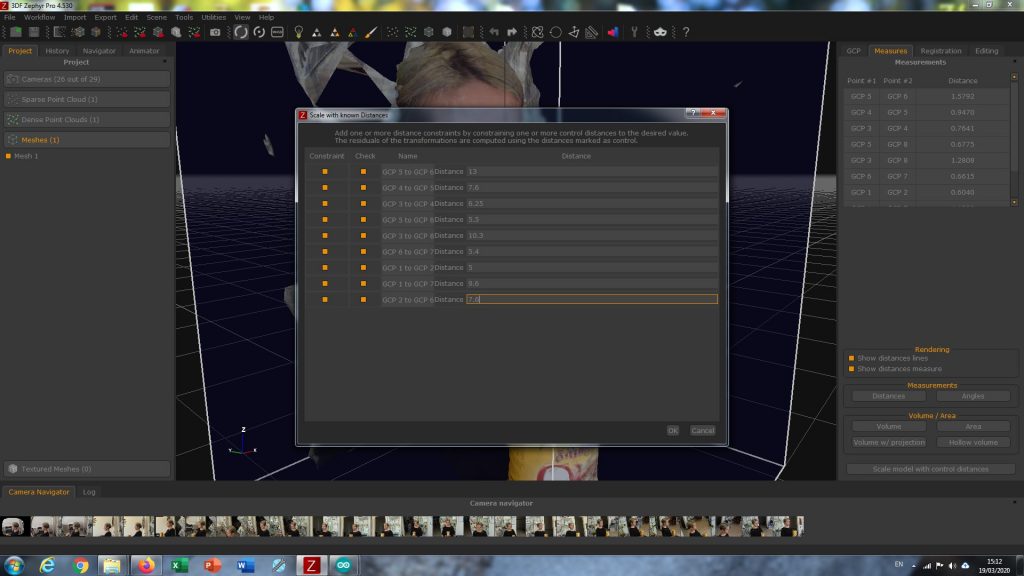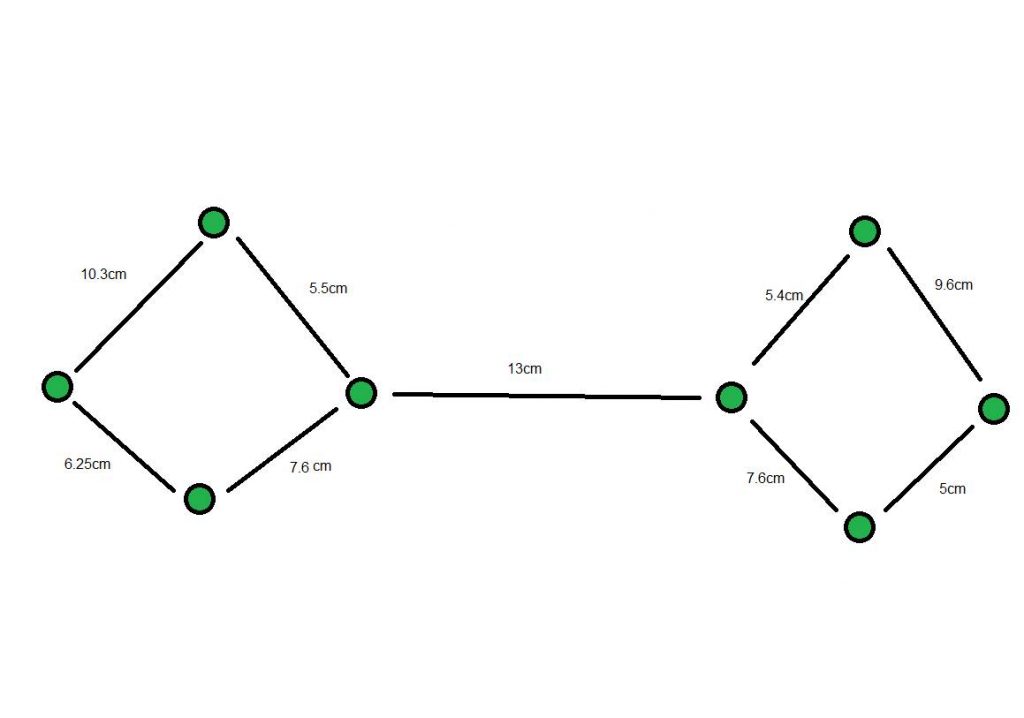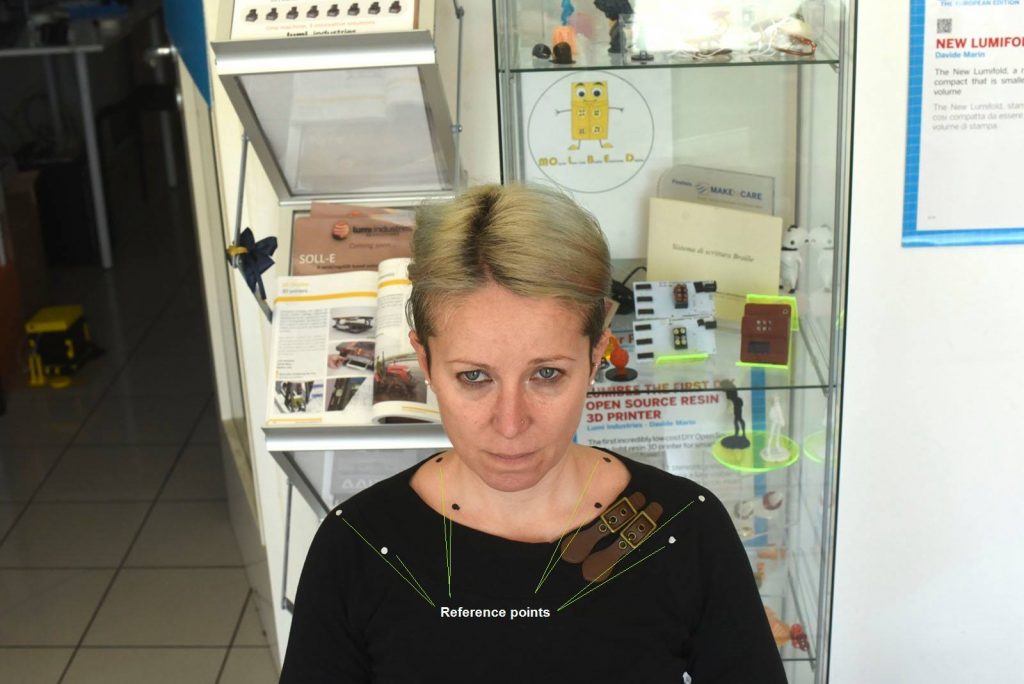How to solve problem that a single design of a 3D Printable mask may not fit many people without gaps?
My proposal with photogrammetry + 3D printing.
1) Download photogrammetry Software. Programs like 3D Zephyr Pro, used here, have a trial 14 days license.
2) You will need good camera, preferibly Reflex/Mirrorless. Good and uniform lighting is very important.
3) Cut the markers: I used normal scotch tape, and three-hole punch.
4) Have the person sitting down. Apply the markers (suggested pattern in picture 1).
5) Measure with a string the distance between the markers, as precisly as possible, this is a very important step (pic 2).
6) Take a good amount of photos from all around the subject.
7) Import the photos into the photogrammetry software, set to “body scan”.
8) Generate the mesh.
9) Now the most important step: Use “control points” and “scale model with control distances” to correct the model scale to the real world measures (pics 3a,b,c).
10) You can now export the STL model.
11) Import the STL scan of the subject in MeshMixer and check with the “Measure” tool that the distances between points are consistent with the real world measures.
12) Now you can import your Mask design into the scene (check that the scale is consistent, mm, cm, m) (pic 4)
13) Now you can check if the mask model is too big/small. (pic 5)
14) You can even make the Mask model “flat” in the back part, and use Boolean Difference to cut it precisely tailored to the subject.
This procedure can solve the problem of standard size masks gaps when people are wearing them, and takes advantage of the good availability of 3D Printers, for the so called “mass customization”.
An implementation of this idea can be that people working in front line (those more exposed) will take photos of themself (even at home), send to companies/Fab Labs/associations that have many 3D Printers available, that generate the customized mask with 3D Printing (or many single use masks) and send them.
